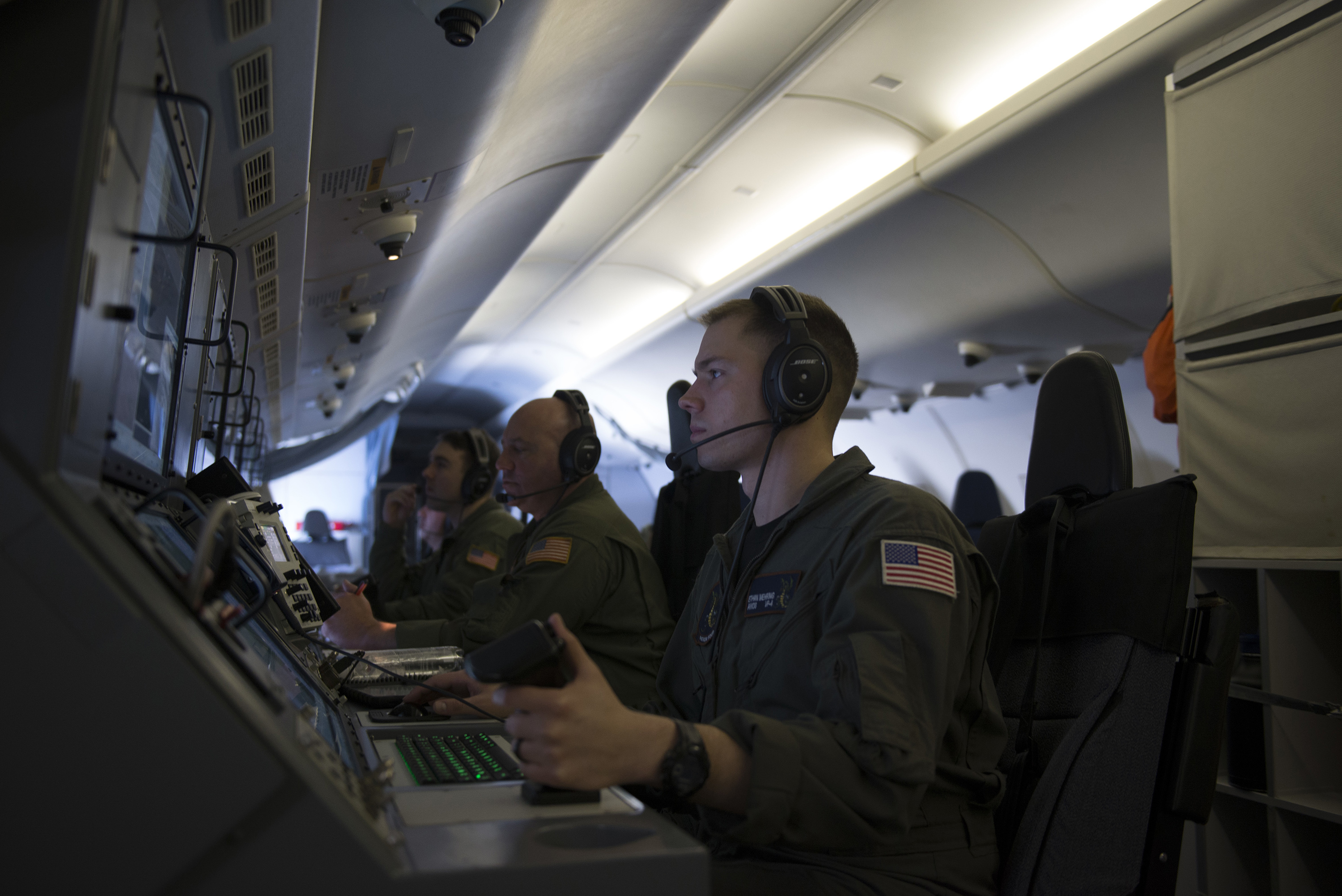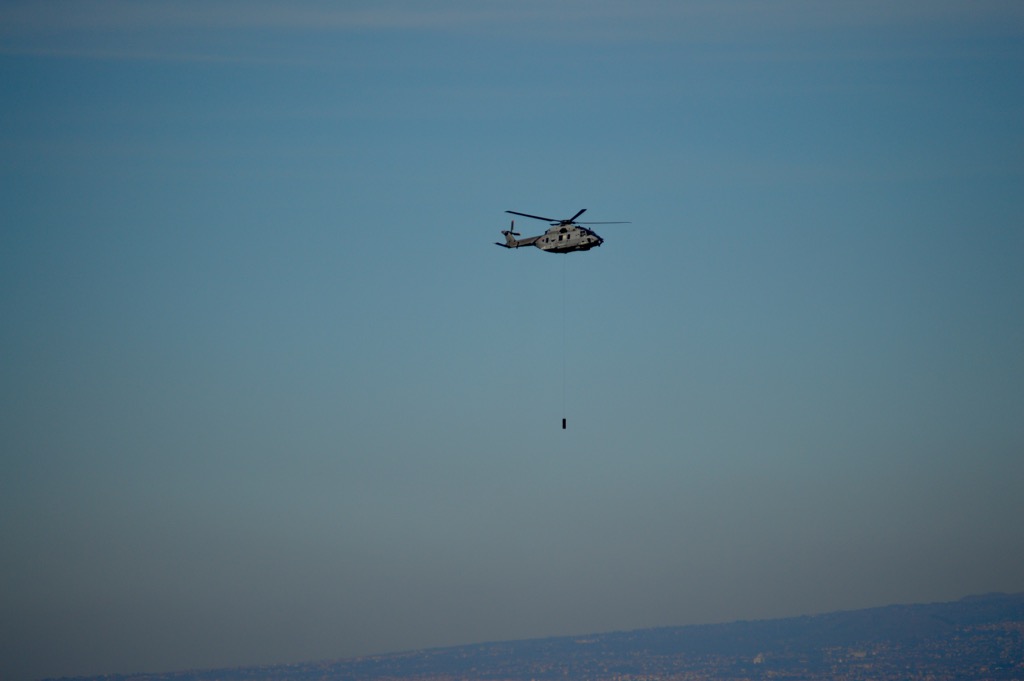
NAVAL AIR STATION SIGONELLA, ITALY – An increasingly sophisticated reconstruction and evaluation team is giving sailors in NATO’s ongoing Dynamic Manta anti-submarine warfare exercise almost real-time feedback that helps them learn from any mistakes they make each day instead of waiting weeks or months for corrections.
An In-Stride Debriefing Team (IDT) set up at Naval Air Station Sigonella in Sicily is helping the participants in the air, surface and undersea domains understand each day what contributed to their success in finding the target submarine in that day’s serial, or if they didn’t find the submarine, what opportunities they had to detect the sub and why they missed their target.
In some cases, the issue could be as simple as operating a sonar at the wrong depth in the water column, where a simple fix could help the team find success the next day. In other cases, the lessons learned may be more complicated – but participants are finding out during the exercise while they can consult other experts and try to correct out their mistakes, whereas in other exercises they might not understand until weeks or months later what went wrong.
“Normally during most exercises you don’t get that sort of immediate feedback. So what I’m hoping to see is maybe at the beginning of the exercise the people shaking the rust off, if you will, to at the end of the exercise they are feeling really that they’ve gotten that feedback that they need in a real-time feedback loop such that their skillsets are improved,” U.S. Rear Adm. Andrew Burcher, who commands submarines at NATO’s Maritime Command (MARCOM), said during a press conference at sea during the Dynamic Manta 2020 kickoff.
Burcher likened the capability to a test where you can see the answer to the first question and know if you got it right or wrong before moving on to the second question.
That immediate feedback can help participants “see if you’ve improved and understand where maybe your mistakes are. And that’s incredibly important, because a lot of times in these exercises the ships, the assets don’t know if they got the answer right until weeks later after there’s been some feedback. So that real-time here’s the answer to Question 1, this is how you did, let’s take Question 2, is really important,” he said.

Peter Van Mierlo is leading the IDT, made up of 12 officers from 12 countries with a range of expertise and backgrounds. He has been involved in the effort to provide real-time lessons learned for 20 years, dating back to his time in uniform in the Royal Netherlands Navy.
Van Mierlo told reporters during the exercise that in 2000 he came to participate in Dynamic Manta for the first time, when the exercise had nine submarines and 40 maritime patrol aircraft missions that were flown – but no surface ships at the time. He was told to collect all the data when the aircraft came back from their missions, and in sorting through stacks and stacks of papers from the exercise, he realized that 75 percent of the missions were cold – the airplanes did not detect a submarine – and the aircrews would have no way of knowing if there was just no submarine in their operating area or if they missed it due to a mistake they had made.
“They were cold, and they don’t know why, if they missed anything,” he said.
He realized at the time that, with just a little more information on the submarines’ actual tracks, he could figure out what detection opportunities were missed and, with perhaps with a little more information, why.
Some tools were built for the 2001 exercise and have been improved upon since then, bringing answers to aircraft and ship crews within about 24 hours so they can apply lessons learned to the next serial in the exercise.
Today’s feedback comes in the form of Power Point slides, where Van Mierlo and his team of experts map out snapshots of every 15 minutes or so, where the subs were versus anti-submarine warfare assets, and comments regarding what actions the crew took versus what they should have done.
“The idea is that the [operations] officer takes that aboard ship, gets the whole team around it and talks his way through it and picks up on what went well and what could go better, to accelerate the lessons learned process,” Van Mierlo said.
Some nations contributing to the IDT send experts on diesel submarines, and some send experts on ASW – and this year, the U.S. Navy for the first time sent an expert on the lessons learned process.
Lt. Ryan Rapada, the ASW officer at the Afloat Training Group who was previously trained to be an anti-submarine/anti-surface warfare tactics instructor (WTI) through the Naval Surface and Mine Warfighting Development Center (SMWDC), is supporting this NATO exercise on behalf of SMWDC for the first time in the command’s history.
Rapada told USNI News that SMWDC stresses the PBED process – planning, briefing, executing and debriefing – above all else as a way to improve proficiency quickly.
“That is exactly what we’re doing here. So we receive the data, do the analysis and debrief,” he said.
“Debrief is the most important part, that’s how the guys get all their lessons learned. So we construct the PowerPoints, something that we vigorously did in the (SMWDC) schoolhouse, and then we get the chance to interact with the squadrons and the surface ships and submariners and sort of poke them to talk about what they did and how they can improve.”
During Surface Warfare Advanced Tactical Training (SWATT) events hosted by SMWDC for ships preparing to deploy, the PBED process is enhanced by playback tools that allow operators to listen back to conversations on the bridge and re-look at what they could see on their screens at the time, to discuss in vivid detail what they knew and how they arrived at the decisions they made. The IDT at the NATO exercises does not have the playback tools but does recreate that to a degree in the PowerPoint slides, with detailed tracks, depth movements, detections, and commanders’ commentary on what tactical thinking drove their decisions.
Rapada said that some of his colleagues on the IDT have dedicated their careers to mastering ASW in a way that American sailors aren’t often able to do, as they might serve as an ASW Officer on a surface ship but then move onto another assignment with another focus area two years later. What he could bring, to supplement their deep subject matter knowledge, is an expertise on generating lessons learned and boosting crew proficiently on short timelines.
“WTIs enter the fleet as warriors, thinkers, and teachers,” Rapada told USNI News.
“Being part of Dynamic Manta, we’re constantly analyzing the tactics being used in each [combined ASW exercise] to provide lessons learned to all of the major players. During the debriefs, we have a chance to teach doctrine and help the participants from every community become a more lethal force.”





